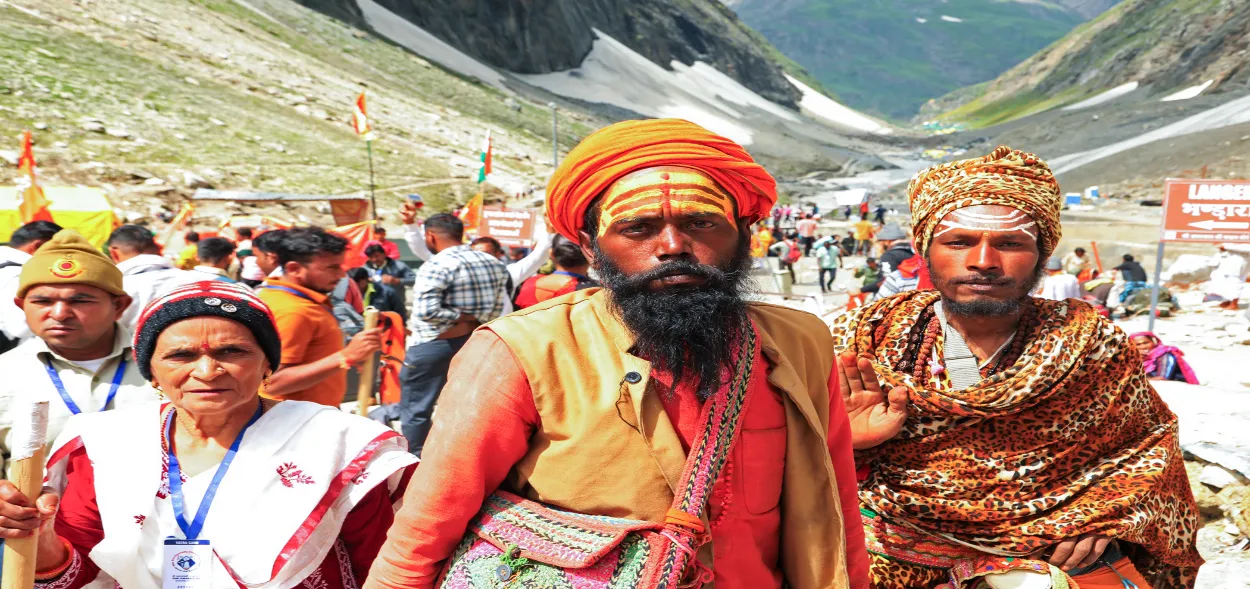
 Saquib Salim
Saquib Salim
In Hinduism and Islam, faqirs and sadhus are often seen as mendicants who have renounced the world and live on alms. They are also seen as being far from the political and economic problems of this world. Therefore, it is commonly believed that Faqirs and Sadhus did not take part in the freedom struggle of India. Nothing can be farther from the truth. In fact, the mendicants offered the most militant opposition to colonial rule.
India came under colonial rule with the victory of Robert Clive led-English forces over Siraj ud-Daulah’s Indian army at Plassey in 1757. Indian rulers were either too weak to fight the English or busy in their internal wars. Sadhus and Faqirs were the first to foresee the destruction that will be caused by the English Raj. In a few years, they organized themselves into armed groups and started armed resistance against the British in 1762.
Majnu Shah, a leader of Faqirs, on the advice of one of his Sufi masters, Hamiduddin, joined hands with Sanyasis especially Naga Sadhus to fight against the colonial English rulers. Those who believe in dividing India along linguistic lines should know that Majnu Shah was from the Awadh region and he led peasants of Bengal, Odisha, Bihar, Jharkhand, Assam, and Bangladesh against the English forces. Bhavani Pathak and Devi Chaudhrani were leading the Sanyasi army. For more than two decades Majnu Shah remained a threat to English rule. Thousands of armed people fought under his leadership killing several officers of the English army.
Musa Shah led the resistance after the death of Majnu in 1787. He could sense that irregular armed bands of peasants could not win the war against a disciplined English army with superior arms. In the next few years, the strategy was changed. Several historians with colonial lenses of looking at history write that Faqir Sanyasi Rebellion came to an end by 1800. It is a complete misinterpretation of the facts.
In the mid-1790s Faqirs and Sadhus stopped organising peasants for guerilla war. But, they did not disband fighting. Most of them joined Maratha, Tipu Sultan, and other Indian states who were fighting against the British at that time. Naga Sadhus formed billions of swordsmen while Faqirs were mostly artillery people. In fact, Faqirs commanded the artillery of Rani of Jhansi in 1857. Major General Hugh Rose wrote, “One Battery was indeed entirely served by faqueers who fought as their custom is under a black flag”. The Maratha army also had battalions of Faqirs some of them commanded artillery while others were stormtroopers called Aligol (the name because they would encircle the enemy and give a war cry of Ya Ali).
A few Faqirs and Sadhus became spiritual masters of the royal families and high-ranking officials. Tipu Sultan as well as Marathas had these spiritual leaders who would encourage them to fight against foreign rule.
Other Faqirs and Sadhus were given tasks to instill patriotism among the Indian sepoys of the English army. These religious men would roam around army cantonments to perform puppet shows, readings of Ramayana, Karbala, and other plays to give a message that English rule was unjust and fighting against them was a religious duty. This is why after every mutiny, including 1857, the English found out that Sadhus and Faqirs incited sepoys against the English officers.
Faqirs like Adam Sheikh and Aleem Ali Shah led revolutionaries in the 1806 Vellore Mutiny while in 1857 Allama Fazl e Haq Khairabadi and Haji Imdadullah Muhajir Makki led the charge. Maulvi Ahmad Shah was a Faqir who led revolutionaries in Awadh. According to Veer Savarkar, Ahmad Shah was one of the most prominent among those planning and executing 1857. Savarkar wrote, “In the case of extraordinarily brilliant heroes like Moulvie Ahmad Shah, their death is as noble and as extraordinary as their life.”
Faqirs could not defeat the English in 1857 but as Hemingway writes, “man can be destroyed but not defeated”, they once again strategized themselves. A group of Faqirs moved to the Afghan frontier and fought against the British in what came to be known as Ambela expeditions.
ALSO READ: Cow Protection Movement was anti British agitation by Hindus and Muslims
In the 1930s Netaji Subhas Chandra Bose emerged as the leader of the Indian Freedom Struggle. Collaborating with him Faqir of Ipi, Pir Pagaro, and other Faqirs raised armies in Sindh and Waziristan. Bose believed that if armed properly these Faqirs would be enough to throw the English out of India.
The struggle was to free and united India. Therefore Faqir of Ipi, who was in Pakistan, wrote to Jawaharlal Nehru in 1948 to support him so that his men could fight Pakistani intruders in Kashmir.
